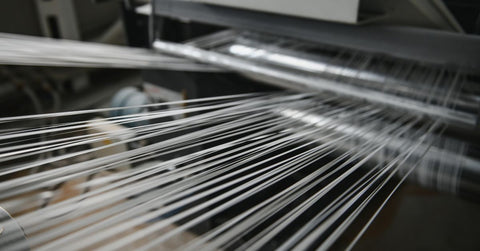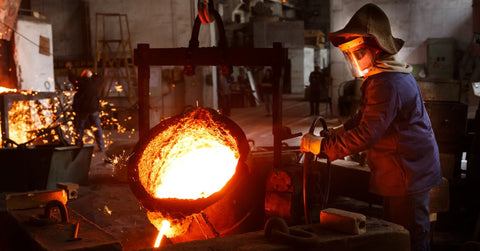Carbon fiber is a material that evokes images of high-speed race cars, advanced aircraft, and elite sporting equipment. Its reputation for being incredibly strong yet lightweight is well-deserved.
Behind this simple reputation, however, is a complex and fascinating field of material science. The material we call "carbon fiber" is almost always a composite—a combination of materials that work together to achieve performance that no single material could achieve on its own. Welcome to the secret world of carbon fiber composites.
At Rocket-Fibers, our team has decades of experience with the high-performance fibers that form the backbone of these advanced materials. We provide industrial-grade textile products and technical expertise to help you select the right materials for your specific application, whether you are building next-generation aircraft or designing high-performance recreational gear.
Our goal is to walk you through the essential aspects of carbon fiber composites, from their fundamental components to their manufacturing and real-world applications. That way, you can make faster, more confident material and sourcing decisions.
What Are Carbon Fiber Composites?
A composite material consists of two or more constituent materials with different physical or chemical properties. When combined, they produce a material with characteristics that differ from those of the individual components.
In a carbon fiber composite, the primary components are:
- Reinforcement: This is the carbon fiber itself, which provides the strength and stiffness. The fibers are incredibly thin, often just 5 to 10 micrometers in diameter, and are bundled together into tows.
- Matrix: This is the material that surrounds and binds the fibers together. The matrix holds the fibers in place, transfers loads between them, and protects them from environmental damage.
The matrix material is just as important as the fiber. The most common matrices are polymers, which fall into two main categories: thermosets and thermoplastics.
Thermoset vs. Thermoplastic Matrices
Thermoset polymers, like epoxy, are the most common matrix for carbon fiber composites. They are initially liquid and cure into a solid through a chemical reaction, often with the application of heat. This process is irreversible. Thermosets offer excellent strength, stiffness, and resistance to high temperatures.
Thermoplastic polymers, on the other hand, can be repeatedly melted and reshaped. While traditionally less common for high-performance composites, advances in materials like PEEK (Polyetheretherketone) are making them more popular. They offer superior impact resistance and toughness.
The choice between a thermoset and a thermoplastic depends entirely on the performance requirements, manufacturing process, and cost constraints of the final part.

Designing With Composites: It’s All in the Layup
Unlike metals, which are typically isotropic (having uniform properties in all directions), carbon fiber composites are anisotropic. Their properties are directional, determined by the orientation of the layers of carbon fiber fabric. This is a key advantage, as it allows engineers to place strength and stiffness precisely where they are needed most.
This process, known as the "layup," involves stacking multiple layers of carbon fiber material, referred to as plies. Each ply can be oriented in a specific direction (e.g., 0°, 90°, +/-45°). The sequence and orientation of these plies dictate the final mechanical properties of the part.
An engineer might design a quasi-isotropic layup for a part that experiences loads from many directions, or a highly directional layup for a part that primarily handles tension in one direction.
Layups utilize woven or unidirectional fabrics supplied as dry textiles or processed forms, tailored to the selected manufacturing route. Material choice aligns with the process and performance targets.
Key Properties and Advantages
The reason carbon fiber composites are chosen for demanding applications comes down to their unique combination of properties.
- High strength-to-weight ratio: This is the most famous attribute. Carbon fiber composites can be as strong as steel but weigh significantly less. This makes them ideal for aerospace, automotive racing, and high-performance sports.
- High stiffness: Composites are extremely rigid and resist deformation under load. This is critical for applications where maintaining shape is essential, such as aircraft wings or satellite structures.
- Fatigue resistance: Metals can weaken and fail over time when subjected to repeated loading cycles. Carbon fiber composites have excellent fatigue resistance, extending the service life of components.
- Corrosion resistance: Unlike most metals, carbon fiber composites do not rust or corrode. This makes them valuable in harsh chemical environments, such as those found in the oil and gas industry, and in marine applications.
Alongside carbon, other high-performance fibers such as para-aramid (e.g., Kevlar®), UHMWPE, and LCP fiber offer distinct advantages. For instance, aramid provides exceptional impact and abrasion resistance, while glass fiber offers a cost-effective balance of strength and weight.
A knowledgeable supplier can help navigate these options to create a hybrid composite that meets multiple performance targets.

Fiber Families and When To Use Them
Selecting the right fiber type is essential for optimizing performance and longevity in composite applications. Rocket-Fibers supplies several advanced fiber families, each offering unique benefits tailored to specific environments and mechanical requirements.
Carbon Fiber
Known for high stiffness and a superior strength-to-weight ratio, carbon fiber is ideal for aerospace structures, sporting goods, and any application where weight savings and rigidity are crucial. Its conductivity is also relevant in electronic or EMI-sensitive assemblies, though careful handling is required when electrical isolation is important.
Para-Aramid (Kevlar®)
This fiber excels where impact resistance and durability against abrasion are necessary. Often selected for ballistic protection, cut-resistant gear, and ropes that are subject to intense wear, para-aramid offers high tensile strength with low elongation and good thermal stability.
UHMWPE
Ultra-high-molecular-weight polyethylene fibers stand out for their extremely high tensile strength-to-weight properties and impressive flexibility. Commonly used in marine ropes, tactical lines, and applications exposed to moisture and chemicals, UHMWPE delivers low density and resistance to corrosion. It is important to account for lower heat resistance and some creep under sustained load.
LCP Fiber (Vectran™)
LCP (liquid crystal polymer) fiber offers dimensional stability, low creep, and fatigue resistance. This makes it valuable in precision tension members, flexible electronics, and engineered reinforcements that require both flexibility and long-term stability.
By understanding the characteristics of each fiber family, engineers and procurement teams can confidently match materials to the demands of their projects.
Rocket-Fibers provides technical support to help you select the best option for your specific application, enabling you to balance performance, operating environment, and cost.
The world of high-performance materials is constantly evolving. As manufacturers push the boundaries of performance, the need for precise material selection and reliable supply becomes paramount. Partnering with a fiber specialist ensures you have access to the right materials and technical support. From aerospace structures to consumer products, Rocket-Fibers can help you navigate the secret world of carbon fiber composites to achieve your goals.
Vectran™ is a registered trademark of Kuraray Co., Ltd., Japan



